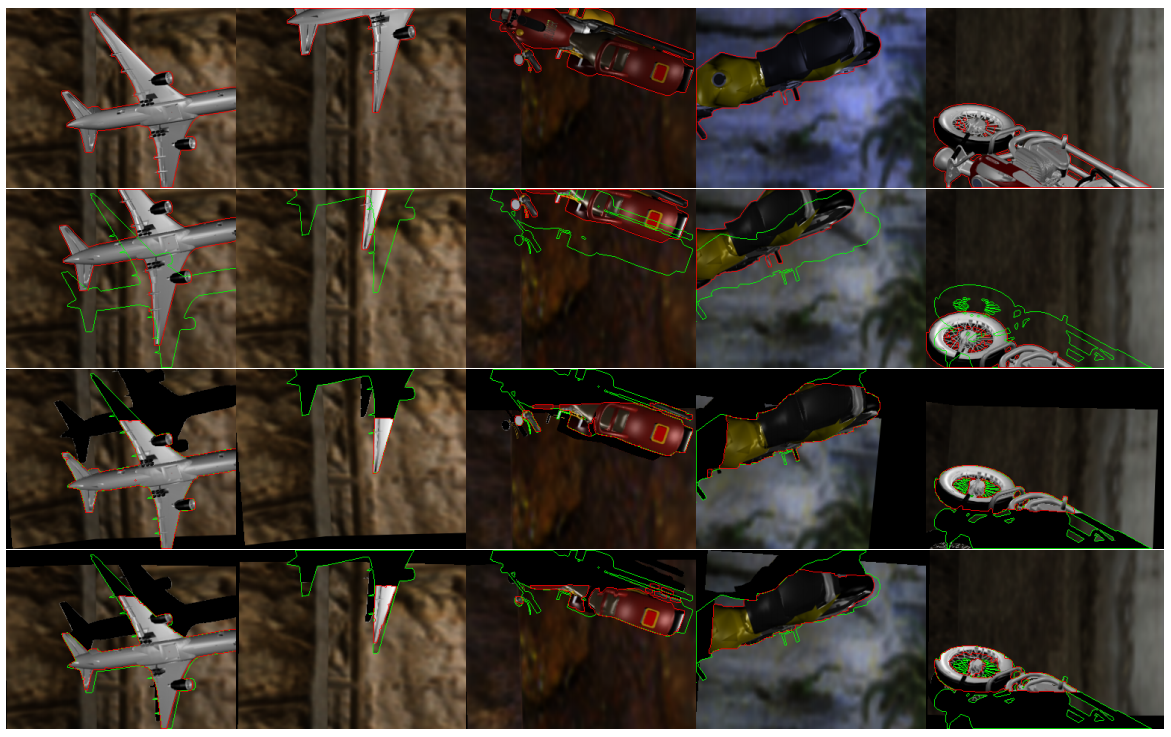Taking a Deeper Look at the Inverse Compositional Algorithm
pdf suppmat Video Project Page Poster
In this paper, we provide a modern synthesis of the classic inverse compositional algorithm for dense image alignment. We first discuss the assumptions made by this well-established technique, and subsequently propose to relax these assumptions by incorporating data-driven priors into this model. More specifically, we unroll a robust version of the inverse compositional algorithm and replace multiple components of this algorithm using more expressive models whose parameters we train in an end-to-end fashion from data. Our experiments on several challenging 3D rigid motion estimation tasks demonstrate the advantages of combining optimization with learning-based techniques, outperforming the classic inverse compositional algorithm as well as data-driven image-to-pose regression approaches.
| Author(s): | Zhaoyang Lv and Frank Dellaert and James M. Rehg and Andreas Geiger |
| Links: | |
| Book Title: | Proceedings IEEE Conf. on Computer Vision and Pattern Recognition (CVPR) |
| Year: | 2019 |
| Month: | June |
| Bibtex Type: | Conference Paper (inproceedings) |
| Event Name: | IEEE International Conference on Computer Vision and Pattern Recognition (CVPR) 2019 |
| Event Place: | Long Beach, USA |
| Electronic Archiving: | grant_archive |
BibTex
@inproceedings{Lv2019CVPR,
title = {Taking a Deeper Look at the Inverse Compositional Algorithm},
booktitle = {Proceedings IEEE Conf. on Computer Vision and Pattern Recognition (CVPR)},
abstract = {In this paper, we provide a modern synthesis of the classic inverse compositional algorithm for dense image alignment. We first discuss the assumptions made by this well-established technique, and subsequently propose to relax these assumptions by incorporating data-driven priors into this model. More specifically, we unroll a robust version of the inverse compositional algorithm and replace multiple components of this algorithm using more expressive models whose parameters we train in an end-to-end fashion from data. Our experiments on several challenging 3D rigid motion estimation tasks demonstrate the advantages of combining optimization with learning-based techniques, outperforming the classic inverse compositional algorithm as well as data-driven image-to-pose regression approaches.},
month = jun,
year = {2019},
slug = {lv2019cvpr},
author = {Lv, Zhaoyang and Dellaert, Frank and Rehg, James M. and Geiger, Andreas},
month_numeric = {6}
}

